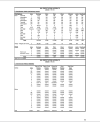OldBlackDog
Well-Known Member
Interior Fraser River steelhead is not the only population suffering from drastically reduced returns this year. From northern B.C.’s rivers to the Columbia River in Washington and Oregon, Taylor says coast-wide, the numbers have plummeted. In the Skeena River, the steelhead fishery was finally closed in October after August returns dropped to around 5,280 adult fish, the lowest in 66 years of monitoring and less than a quarter of the historical average.Lol! I haven't fished in over 5 years, this won't affect me at all but it will impact many who do.
Yes, it is too late for IFS but you have to hope we have learned a bit because Skeena steelhead will be next.
Edit:
I am not advocating for listing Skeena steelhead under SARA.
“They should have 25,000 to 45,000 fish,” said Taylor.





